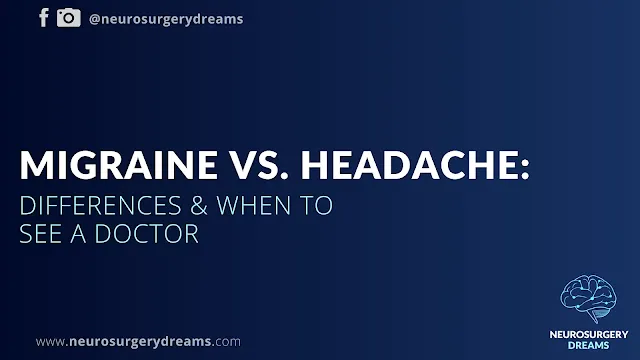Migraine vs. Headache: Differences & When to See a Doctor
Understanding the signs, symptoms, and when to seek help
Introduction
Headaches are a common experience, but not all headaches are created equal. While a typical tension headache might cause mild discomfort, a migraine can be debilitating, affecting every aspect of daily life. Understanding the difference between these two conditions is crucial for effective management and treatment. In this article, we’ll break down the key distinctions between migraines and regular headaches, highlight red flags that warrant medical attention, and provide actionable guidance for when to see a doctor for a headache.
Understanding Regular Headaches (Tension Headaches)
Tension headaches are the most common type of headache, often described as a "band of pressure" around the head. Understanding these tension headache symptoms is key:
- Pain Characteristics: Constant, dull, or pressing pain, typically affecting both sides of the head or forehead.
- Intensity: Mild to moderate, rarely interfering with daily activities.
- Associated Symptoms: Possible neck or shoulder stiffness. Importantly, there is typically no nausea, vomiting, or sensitivity to light/sound.
Understanding Migraines
Migraines are a neurological condition characterized by intense, recurring attacks. Key migraine symptoms include:
- Pain Characteristics: Throbbing or pulsating pain, usually starting on one side of the head but may spread.
- Intensity: Severe pain that worsens with movement or physical activity, often disrupting daily life.
- Associated Symptoms:
- Nausea, vomiting, or dizziness.
- Photophobia (light sensitivity) and phonophobia (sound sensitivity), often driving patients to seek refuge in dark, quiet environments during an attack.
- Visual disturbances (aura) in about 25-30% of cases, such as flashing lights or zigzag patterns.
- Duration: 4 to 72 hours if untreated.
- Triggers: Hormonal changes, stress, certain foods (e.g., chocolate, aged cheeses, caffeine), bright lights, or weather changes are frequent migraine triggers.
Key Differences Summarized
| Feature | Regular Headache (Tension-Type) | Migraine |
|---|---|---|
| Pain Type | Dull, constant pressure | Throbbing, pulsating |
| Location | Both sides of the head | Often one-sided |
| Intensity | Mild to moderate | Severe |
| Associated Symptoms | Neck tension (possible) | Nausea, aura, sensitivity to light/sound |
| Duration | 30 minutes–days | 4–72 hours |
| Common Triggers | Stress, dehydration | Hormones, specific foods, light |
When to See a Doctor for a Headache (Red Flags)
While most headaches are harmless, certain headache red flags require immediate medical attention:
- "Worst headache of your life": Sudden, severe pain unlike any previous headache.
- Neurological symptoms: Weakness, slurred speech, vision loss, or balance issues.
- Headache with fever, stiff neck, or confusion: Could indicate meningitis or another infection.
- Post-injury headache: After a head injury, even if mild.
- Frequent or worsening headaches: More than 15 migraines/month or headaches that escalate in intensity.
- No relief from OTC medications: Pain persists despite treatment.
Diagnosis and Treatment Overview
Accurate headache diagnosis is crucial for effective management. A doctor may perform a physical exam, review medical history, or order imaging (MRI/CT scan) to rule out underlying conditions.
Treatment varies significantly:
- Tension headaches: Often managed with over-the-counter pain relievers (e.g., ibuprofen), stress management, and hydration.
- Migraine treatment: May involve prescription medications (like triptans or CGRP inhibitors), lifestyle adjustments (identifying and avoiding triggers), and sometimes preventive therapies.
Conclusion
Recognizing whether you’re experiencing a tension headache or a migraine is the first step toward effective care. While tension headaches are often manageable at home, migraines and any headache accompanied by **headache red flags** require prompt professional evaluation to ensure appropriate treatment and rule out serious conditions.
Call to Action
If you experience frequent or severe headaches, consult a healthcare provider for personalized advice. For more information on neurological symptoms, visit our Symptoms page.

